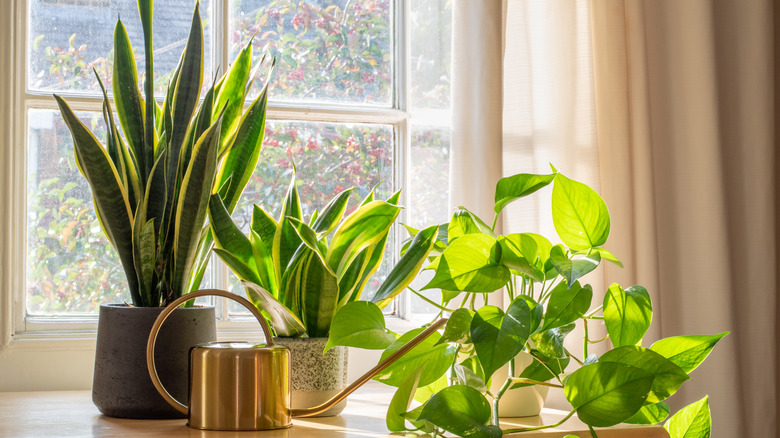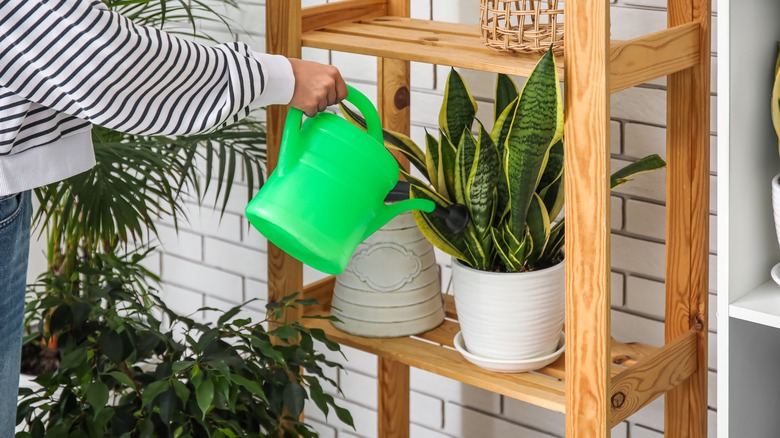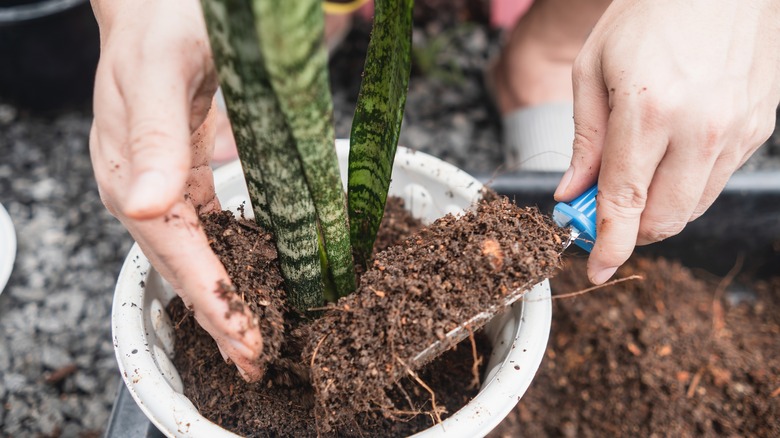Are You Overwatering Your Snake Plant? Our Tips On How Often Is Too Often
Snake plants are one of the most striking and easy-to-grow houseplants you can find. They have long, sword-like leaves that grow upright. The leaves are usually green and have stripes or edging in greens, creams, and even yellow. It is tolerant of most lighting conditions, from a dark corner to a bright window. It will deal with that cold draft from your air conditioner unit and will forgive you every time you forget to water it. It won't, however, easily bounce back from an overwatering.
According to the Missouri Botanical Garden, overwatering is one of the most common reasons houseplants either don't thrive or die. Having too much moisture at the roots prevents them from absorbing oxygen from the soil. When that happens, the roots can't carry water and nutrients to the plant's leaves and the roots gradually rot. If the overwatering is not corrected, most houseplants will soon yellow and die. Snake plants are no different. In fact, they are more susceptible to overwatering than most houseplants.
How to water snake plants
Snake plants prefer to be watered after their soil dries out, so before you pull out the watering can, make sure the soil isn't still moist. You can test it either by checking for moisture with your finger or using a plant water meter closer to the roots where it matters most. Because this plant has succulent leaves, it stores water for use later. It's easy to kill this desert-loving plant with too much kindness, so water only when it has dried out completely.
Snake plants also need well-drained soil, or else they may develop soggy feet. This is just another form of overwatering. You may want to use a cactus soil mix, which allows more air to get to the roots. This also helps the roots to dry out faster. If you want to ensure proper drainage, make sure the pot you choose for your snake plant has a drainage hole. Also, if the saucer under the plant still has water sitting in it after a few minutes, pour it out so the roots don't sit in the water.
How to fix root rot
If you didn't know how to correctly water a snake plant and you've already got a struggling plant, check for root rot. The first signs of this disease are small, yellow leaves. Many of them will fall off the plant, and some might have brown spots as well. The plant will not be thriving. Check for root rot by gently sliding your plant out of its pot. Normal, healthy roots are white or cream. You will know root rot has set in if your roots are mushy, brown, or black and have a smell.
If you're wondering how to save your overwatered plant, treating root rot in a houseplant is not always successful, but there is always a chance you can save it if you act quickly. First, trim off any rotting roots and leaves with sharp and clean pruners. Now repot the plant into fresh soil. This is a great place to use cactus mix because it is so well-draining. Alternatively, you can add pumice stone to regular potting soil. Pumice is sold in nurseries and home improvement stores in small bags. This will allow more air to get to the roots. Now water lightly. Make sure you allow the plant to dry out between waterings in the future. When you see new foliage growth, you will know the plant is creating new roots.


